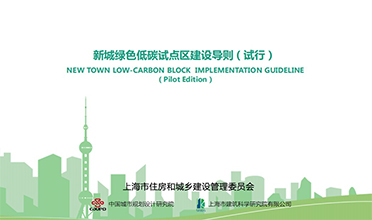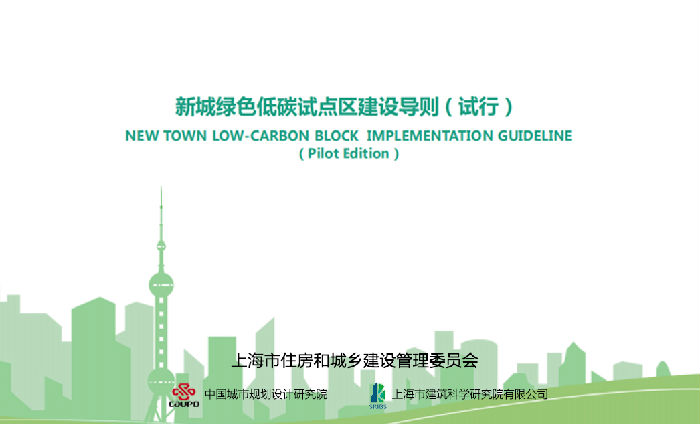



8. Efficient and connected intelligence management system
8.1 Overall requirements
The guidelines require the new city to apply information technology and BIM technology to lay the foundation for digitalization of the whole construction process. New City will rely on the regional energy intelligent management system to monitor the energy consumption data of the pilot area, so as to master the energy consumption and carbon emission situation in the region. At the same time, the new city will also continuously improve the level of supervision to achieve dynamic analysis and intelligent management of energy saving and emission reduction indicators in the pilot area, so that it will achieve the goal of controlling regional carbon emission indicators and improving the level of regional intelligent management.
8.2 Deeply integrated BIM applications
8.2.1 Comprehensive application of BIM digital design technology for new construction projects
The guidelines propose to adopt BIM digital design for all types of projects above the scale of the pilot area (new construction, alteration and expansion of construction projects with total investment larger than 100 million yuan or construction area of 20,000 square meters and above) to achieve design collaboration and optimization. The new city should unify the BIM organization, working interface, model fineness and sample files in the design process. New construction projects need to adopt BIM forward design technology to optimize the design process and support data exchange and information sharing between different professions and between design and production and construction. The new city should unify the BIM organization, working interface, model fineness and sample files in the design process.
8.2.2 Improve the application of BIM technology in the construction process
Pilot area projects should actively use BIM, big data, cloud computing, Internet of Things and mobile communications and other information technology to organize green construction, improve the level of information and refinement of construction management, and promote the development of digital transformation of the construction industry.
8.2.3 Promote the application of BIM technology throughout the building life cycle
The new city should make full use of the information management platform based on unified data and interfaces to support the information sharing and transmission of each participant and each phase, and support the docking and integration linkage between BIM modules and multiple types of information platforms. According to the demand of operation and maintenance management, it will guide the design and construction, promote the application of BIM technology from construction stage to operation and maintenance management, and realize the whole life cycle application of technology.
8.2.4 Promote the new construction management model and the in-depth application of BIM technology in industrialized construction
The new city should strengthen the deep integration application of BIM technology in the process of engineering design and factory production during the standardized scale production of assembly building components based on the reform pilot projects of production organization methods (general engineering contracting, whole process consulting, architect responsible system, etc.).
8.3 Intelligent energy control system
8.3.1 Implementation of the classification and sub-metering of energy use
At the regional level, the new city should implement categorized measurement of energy supply in the pilot area, including electricity, gas, fuel oil, centralized heating, centralized cooling, renewable energy, water resources and other energy resources. At the level of building units, the new city should measure energy use by purpose, including air conditioning, lighting, electrical outlets, elevators, power and other types. Newly constructed office buildings of state institutions and large public buildings need to install sub-metering devices with data collection and transmission functions. Completed office buildings of state institutions, large public buildings and other buildings that need energy-saving renovation also need to install energy consumption monitoring devices interconnected with the regional energy consumption supervision information system.
8.3.2 Establish energy monitoring and management platform
The pilot area needs to establish an energy monitoring management system, which realizes the monitoring of energy consumption through data collection of the energy usage of buildings, infrastructure (facilities such as electric vehicle charging piles) and public facilities (facilities such as various energy centers) in the area. This control system makes full use of the value of data through the aggregation and management of it, mining and analysis, query and visualization, and other operations.
8.3.3 Build intelligent energy control system
Based on the building energy consumption monitoring system, a unified, reliable, complete, secure, open, manageable and scalable intelligent energy control system is built. The system's functions include load prediction, energy consumption monitoring, energy consumption quota management, energy consumption diagnosis and audit, energy cost statistics, energy dispatching, equipment control, comprehensive visualization, etc.
8.4 Build CIM platform for refinement management
8.4.1 Actively build a city information modeling platform (CIM)
The new city should follow the principles of "government-led, multi-participation, localization, use for construction, joint sharing, safety and reliability, integration of production and use, and collaborative breakthrough" to establish a basic platform dedicated to the intelligent operation and management of the city. The guidelines propose to improve the city's unified spatial geographic data base map, thus promoting the construction of a special database for urban management and the upgrading of building information modeling technology (BIM) to the city information modeling system (CIM). The platform unifies the management of CIM data resources, provides all kinds of data, services and application interfaces, and meets the requirements of data convergence, business collaboration and information linkage.
8.4.2 Create and enrich city operation and management application scenarios
The new city should rely on the existing energy consumption monitoring platform to implement refined management of energy consumption in the region and improve the energy efficiency of building operation. At the same time, combined with the existing urban facilities management platforms, such as integrated corridors, integrated poles, municipal street lights, underground spaces and other management platforms, the city will realize the sophisticated management of urban lifelines, equipment and facilities.
8.4.3 Provide abundant development interfaces to support various CIM applications
The CIM foundation platform will fully consider and reserve various kinds of demand interfaces, and fully make the connection with the existing platforms in special fields such as transportation and environment, so as to achieve the maximum sharing of information and the most efficient co-construction and linkage of platforms.
8.5 Regional Carbon Emissions Management
8.5.1 Establish carbon emission statistics mechanism
In the pilot area, the scope, object, mode, period and data source of carbon emission statistics are determined. The statistical objects mainly include carbon sources and carbon sinks of buildings, energy facilities (energy centers), infrastructure (charging piles, etc.), municipal facilities (municipal streetlights), etc. Data sources include energy bills, ledgers, industry regulatory data, etc.
8.5.2 Improve the carbon emission monitoring system
Relying on the energy consumption monitoring platform, the carbon emission situation in the pilot area is monitored and managed. At the same time, it continuously improves the functions, enhances the accuracy, and visualizes the regional carbon emission situation, and constructs a dynamic map of carbon emission from the operation of public buildings in the new city, so as to fully grasp the carbon emission level in the pilot area.
8.5.3 A sound carbon emission and carbon sink accounting system
The new city shall use the method of the difference between carbon emissions from energy use and carbon sequestration by carbon sinks to account for the comprehensive carbon emissions. The carbon emission coefficients of energy use and carbon sequestration coefficients shall adopt the relevant standards and guidelines issued by Shanghai, the emission coefficients of electricity shall adopt the regional emission coefficients of East China Power Grid in the past three years, and the emission coefficients of natural gas, gasoline and diesel shall come from the "Shanghai Greenhouse Gas Emission Accounting and Reporting Guidelines (Trial)".
Source: <https://zjw.sh.gov.cn/jsgl/20220301/4f85d9ad98954bee9004a0d6d529f086.html>
Translated by Hou Ying